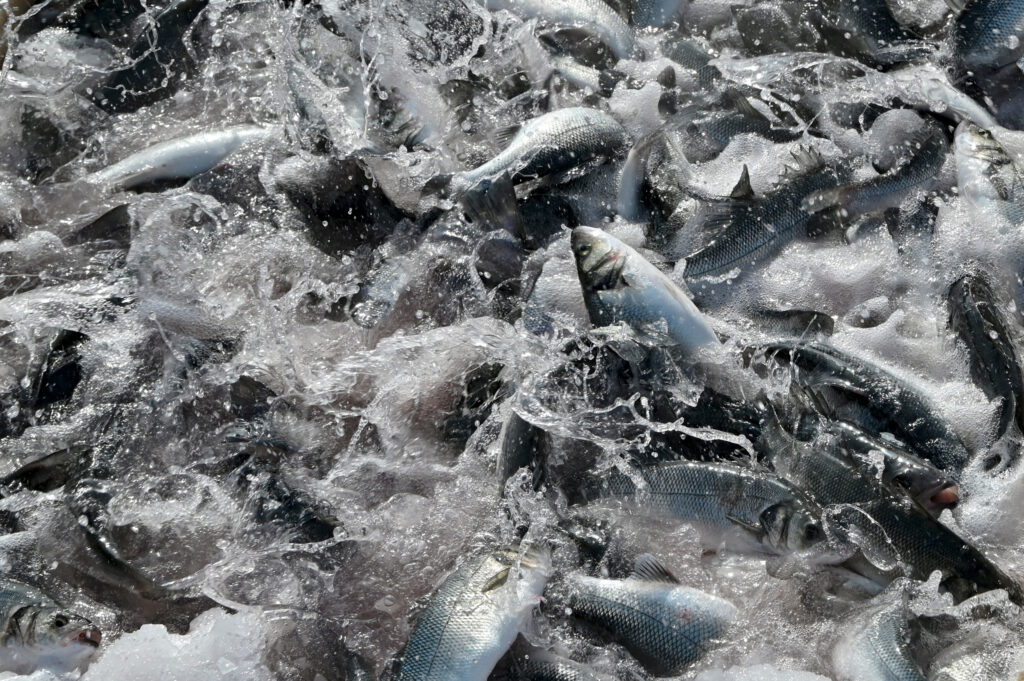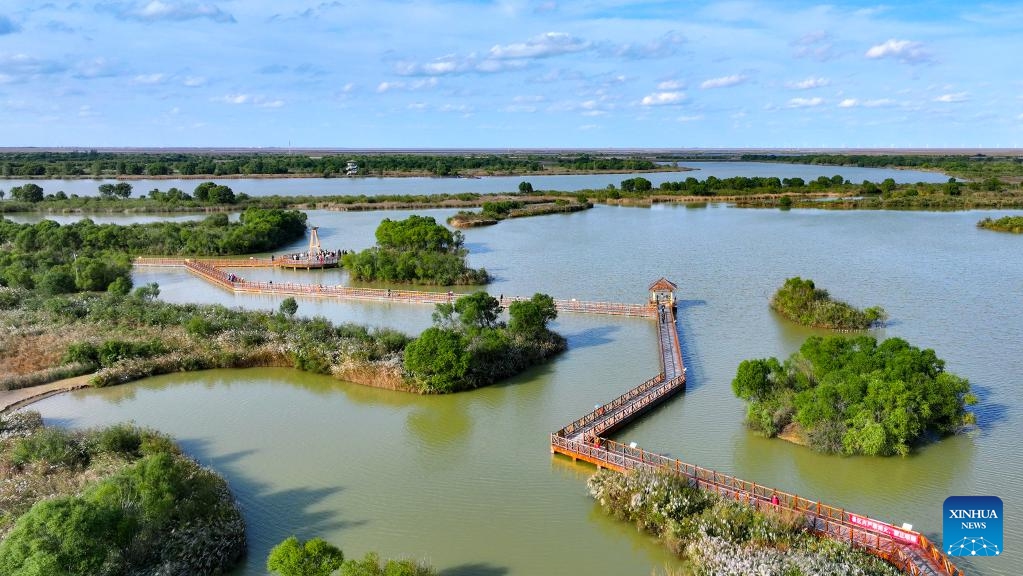Nature’s Underwater Experiment Could Rescue Dying Seagrass Meadows – Technology Networks

Genomic Innovation in Seagrass Restoration to Advance Sustainable Development Goals
A recent study highlights the development of a hybrid seagrass with enhanced resilience, offering a promising, science-based solution to restore vital marine ecosystems. This research directly supports the achievement of several United Nations Sustainable Development Goals (SDGs), particularly those concerning marine health, climate action, and scientific innovation.
The Challenge: Degradation of Marine Ecosystems and Ineffective Restoration
Seagrass meadows are critical coastal ecosystems that face significant threats from human activities and climate change. Their degradation undermines progress towards key global sustainability targets.
- Threats to SDG 14 (Life Below Water): Boating, dredging, disease, and extreme weather events are destroying seagrass habitats, which serve as nurseries for marine life, improve water quality, and stabilize the seabed.
- Setbacks for SDG 13 (Climate Action): As natural carbon sinks, the loss of seagrass meadows diminishes the ocean’s capacity to store carbon dioxide, exacerbating climate change.
- Restoration Failures: Traditional restoration methods involving the replanting of common eelgrass (Zostera marina) have a failure rate of approximately 50%, often due to the species’ intolerance to low-light conditions in increasingly murky coastal waters.
A Breakthrough in Genomically Informed Restoration
Scientists from the Salk Institute and Scripps Institution of Oceanography have identified and analyzed a naturally occurring hybrid seagrass in San Diego’s Mission Bay. This research provides a new pathway for more effective restoration, aligning with SDG 9 (Industry, Innovation, and Infrastructure) by applying advanced scientific techniques to solve environmental challenges.
Key Scientific Findings
- Hybrid Vigor: The new seagrass is a hybrid of the shallow-water Zostera marina and its deep-water relative, Zostera pacifica.
- Genetic Advantage for Low-Light Tolerance: Advanced genomic and transcriptomic analysis revealed that the hybrid has inherited genes from Zostera pacifica that control its circadian clock. This internal timing mechanism may allow the hybrid to photosynthesize more effectively in low-light conditions.
- Mechanism of Resilience: Unlike Zostera marina, which ceases light collection early in the day, the hybrid’s inherited circadian clock genes are hypothesized to enable it to collect light for longer periods. This trait is crucial for survival in turbid coastal waters affected by runoff and dredging.
Direct Contributions to Sustainable Development Goals
The development and potential application of this hybrid seagrass represent a significant step forward in achieving marine and climate-related sustainability targets.
SDG 14: Life Below Water
- The use of a more resilient, low-light tolerant hybrid can drastically improve the success rate of seagrass restoration projects.
- Successful restoration will rebuild critical habitats for marine biodiversity, improve water quality, and reduce coastal erosion, directly contributing to the conservation and sustainable use of marine resources.
SDG 13: Climate Action
- Seagrass meadows are highly efficient “blue carbon” ecosystems.
- By enabling the large-scale restoration of these meadows, this innovation enhances nature-based solutions for capturing and storing atmospheric carbon, directly contributing to climate change mitigation.
SDG 9 (Innovation) and SDG 17 (Partnerships for the Goals)
- This research exemplifies “genomically informed restoration,” a novel approach that replaces trial-and-error planting with data-driven strategies to improve outcomes.
- The project, a collaboration between leading research institutions and supported by both federal funding and private philanthropy, demonstrates the effective partnerships required to advance the SDGs.
Future Outlook and Global Implications
While further field testing is required to assess the ecological impact and reproductive viability of the hybrid, this study marks a pivotal shift towards using genomic insights for environmental restoration. By selecting plants genetically matched to specific environmental challenges, this approach can markedly improve the establishment and long-term success of efforts to restore our oceans and coastlines, thereby accelerating progress towards a sustainable future.
Analysis of Sustainable Development Goals in the Article
1. Which SDGs are addressed or connected to the issues highlighted in the article?
-
SDG 14: Life Below Water
- The article is fundamentally about conserving and restoring a critical marine ecosystem—seagrass meadows. It explicitly mentions that “Seagrasses preserve our oceans, offering safe harbor for sea life, calming rough waters,” and that the research aims to create “more resilient seagrass meadows.”
-
SDG 13: Climate Action
- The article directly links seagrass to climate change mitigation by stating they are responsible for “storing excess carbon dioxide.” Furthermore, it notes that the research was partially funded by “private philanthropy focused on developing plants to capture and store more carbon,” reinforcing the connection to climate action.
-
SDG 15: Life on Land
- While focused on a marine plant, the article highlights benefits that directly impact terrestrial and coastal zones. It states that seagrasses “protect coastlines” and “prevent coastal erosion,” which are crucial services for the stability of land-based ecosystems at the land-sea interface.
-
SDG 9: Industry, Innovation, and Infrastructure
- The core of the article is a scientific innovation. The development of “genomically informed restoration” using “advanced genomic and transcriptomic technologies” represents a significant advancement in scientific research and technology aimed at solving an environmental problem. This aligns with the goal of fostering innovation for sustainable development.
2. What specific targets under those SDGs can be identified based on the article’s content?
-
Target 14.2: Sustainably manage and protect marine and coastal ecosystems
- The entire article focuses on restoring seagrass meadows, which are vital coastal ecosystems. The research aims to overcome the high failure rate of current restoration efforts to “markedly improve establishment and long-term success,” directly contributing to the management, protection, and restoration of these habitats.
-
Target 15.5: Take urgent action to halt the loss of biodiversity
- The article describes seagrass meadows as a “safe harbor for sea life” and notes their degradation is a threat. By developing a more resilient seagrass for restoration, the research directly addresses the degradation of a natural habitat, which is essential for halting the associated loss of marine biodiversity. A key question for future research mentioned is whether the hybrid is “attracting different fish and invertebrates.”
-
Target 13.3: Improve education, awareness-raising and human and institutional capacity on climate change mitigation
- The research conducted by the Salk Institute and Scripps Institution of Oceanography enhances the scientific knowledge and institutional capacity for using nature-based solutions (seagrass restoration) for carbon sequestration (“capture and store more carbon”). This scientific advancement is a form of capacity building for climate change mitigation.
-
Target 9.5: Enhance scientific research and upgrade technological capabilities
- The article details a shift from “trial-and-error plantings” to a technologically advanced method of “genomically informed restoration.” This use of “advanced genomic and transcriptomic technologies” to create a resilient hybrid plant is a clear example of enhancing scientific research and upgrading technological capabilities to achieve sustainable outcomes.
3. Are there any indicators mentioned or implied in the article that can be used to measure progress towards the identified targets?
-
Success rate of restoration projects
- The article explicitly states that current restoration efforts “fail around half the time” and that the new genomic approach aims to “markedly improve establishment and long-term success.” Therefore, the percentage of successful plantings is a direct and measurable indicator of progress.
-
Resilience of seagrass meadows to environmental stressors
- The new hybrid was developed for its “tolerance for low-light conditions.” The article suggests its resilience could help it “endure seasonal storms and algal blooms.” Measuring the survival and health of these restored meadows under such stress conditions would serve as an indicator of their enhanced resilience.
-
Carbon sequestration capacity
- The role of seagrass in “storing excess carbon dioxide” is highlighted. An implied indicator would be the measurement of carbon captured and stored per unit area of the newly restored hybrid seagrass meadows, quantifying their contribution to climate change mitigation.
-
Biodiversity in restored habitats
- The article poses the question, “Is it attracting different fish and invertebrates?” This implies that monitoring the species richness and abundance of marine life within the restored meadows is a key indicator of successful ecosystem restoration and its contribution to halting biodiversity loss.
4. Table of SDGs, Targets, and Indicators
| SDGs | Targets | Indicators |
|---|---|---|
| SDG 14: Life Below Water | Target 14.2: By 2020, sustainably manage and protect marine and coastal ecosystems to avoid significant adverse impacts, including by strengthening their resilience, and take action for their restoration in order to achieve healthy and productive oceans. |
|
| SDG 13: Climate Action | Target 13.3: Improve education, awareness-raising and human and institutional capacity on climate change mitigation, adaptation, impact reduction and early warning. |
|
| SDG 15: Life on Land | Target 15.5: Take urgent and significant action to reduce the degradation of natural habitats, halt the loss of biodiversity and, by 2020, protect and prevent the extinction of threatened species. |
|
| SDG 9: Industry, Innovation, and Infrastructure | Target 9.5: Enhance scientific research, upgrade the technological capabilities of industrial sectors in all countries…encouraging innovation… |
|
Source: technologynetworks.com
What is Your Reaction?
 Like
0
Like
0
 Dislike
0
Dislike
0
 Love
0
Love
0
 Funny
0
Funny
0
 Angry
0
Angry
0
 Sad
0
Sad
0
 Wow
0
Wow
0




















































.jpg.webp?itok=0ZsAnae9#)

























